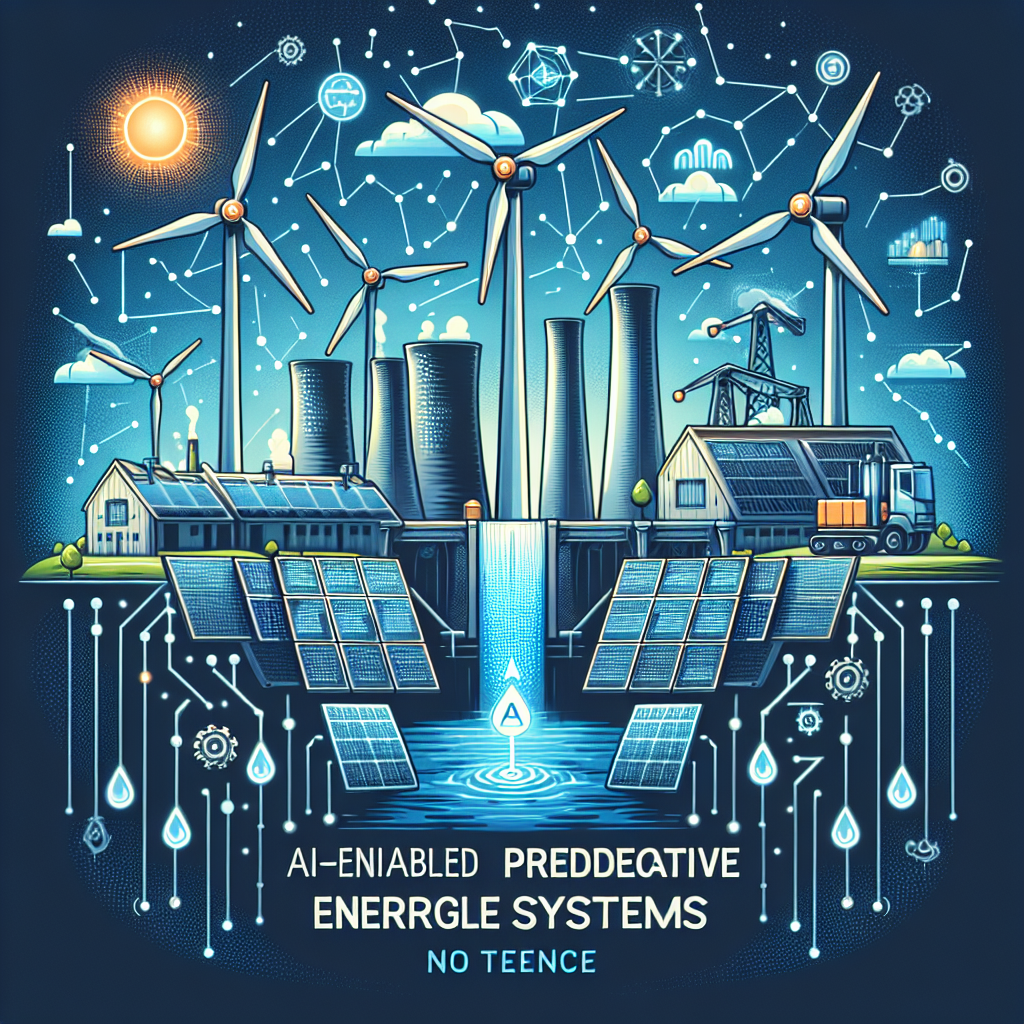AI-Enabled Predictive Maintenance for Renewable Energy Systems
Introduction
Renewable energy systems such as solar panels, wind turbines, and hydropower plants are becoming increasingly important as the world looks to reduce its reliance on fossil fuels and combat climate change. However, like any other complex system, renewable energy systems require regular maintenance to ensure optimal performance and longevity.
Traditional maintenance practices often rely on scheduled inspections and routine maintenance, which can be costly, time-consuming, and inefficient. This is where AI-enabled predictive maintenance comes in. By leveraging artificial intelligence and machine learning algorithms, renewable energy systems can now predict and prevent potential failures before they occur, saving time, money, and resources.
How AI-Enabled Predictive Maintenance Works
AI-enabled predictive maintenance uses data from sensors, monitoring devices, and historical performance data to analyze the condition of renewable energy systems in real-time. These systems collect a vast amount of data on factors such as temperature, vibration, energy output, and environmental conditions, which can be used to identify patterns and trends that indicate potential issues.
Machine learning algorithms are then used to analyze this data and predict when maintenance is needed. By detecting anomalies and deviations from normal operating conditions, AI can predict potential failures before they occur and recommend the most appropriate course of action to prevent them.
Benefits of AI-Enabled Predictive Maintenance for Renewable Energy Systems
There are several key benefits to using AI-enabled predictive maintenance for renewable energy systems:
1. Cost savings: By predicting and preventing failures before they occur, AI-enabled predictive maintenance can reduce downtime, repair costs, and the need for emergency maintenance, saving money in the long run.
2. Improved performance: Regular maintenance based on AI predictions can help to optimize the performance of renewable energy systems, ensuring that they operate at peak efficiency and generate maximum energy output.
3. Increased lifespan: By identifying and addressing potential issues early on, AI-enabled predictive maintenance can help to prolong the lifespan of renewable energy systems, reducing the need for costly replacements.
4. Enhanced safety: Predictive maintenance can help to prevent accidents and injuries by identifying and addressing potential safety hazards before they cause harm.
5. Sustainability: By optimizing the performance and lifespan of renewable energy systems, AI-enabled predictive maintenance can help to reduce the environmental impact of energy generation and support a more sustainable future.
FAQs
Q: How accurate is AI-enabled predictive maintenance for renewable energy systems?
A: AI-enabled predictive maintenance is highly accurate, as it relies on advanced machine learning algorithms to analyze vast amounts of data and identify potential issues before they occur. By continuously learning and adapting to new data, AI can improve its accuracy over time and provide more precise predictions.
Q: What types of renewable energy systems can benefit from AI-enabled predictive maintenance?
A: AI-enabled predictive maintenance can be applied to a wide range of renewable energy systems, including solar panels, wind turbines, hydropower plants, and geothermal systems. These systems can all benefit from predictive maintenance to improve performance, reduce downtime, and extend their lifespan.
Q: How can AI-enabled predictive maintenance be implemented in renewable energy systems?
A: Implementing AI-enabled predictive maintenance in renewable energy systems typically involves installing sensors and monitoring devices to collect data on the system’s performance. This data is then fed into AI algorithms, which analyze it to predict potential failures and recommend maintenance actions. Training the AI model requires historical data on system performance to identify patterns and anomalies.
Q: What are the challenges of implementing AI-enabled predictive maintenance in renewable energy systems?
A: One of the main challenges of implementing AI-enabled predictive maintenance in renewable energy systems is the need for accurate and reliable data. This data must be collected consistently and in real-time to ensure that the AI model can make accurate predictions. Additionally, training the AI model requires expertise in machine learning and data analysis, which may be a barrier for some organizations.
Conclusion
AI-enabled predictive maintenance is revolutionizing the way renewable energy systems are maintained, offering a more efficient, cost-effective, and sustainable approach to maintenance. By leveraging artificial intelligence and machine learning algorithms, renewable energy systems can predict and prevent potential failures before they occur, saving time, money, and resources.
As the world continues to transition to renewable energy sources, AI-enabled predictive maintenance will play an increasingly important role in ensuring the reliability and longevity of these systems. By optimizing performance, reducing downtime, and enhancing safety, predictive maintenance can help to support a more sustainable future for generations to come.

